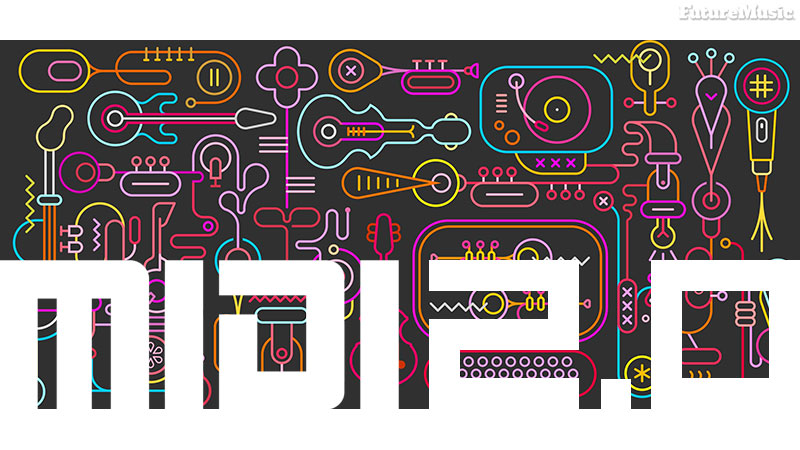The MIDI Manufacturers Association has ratified the MIDI 2.0 specification. Yes, you read that correctly, version 2.0. It only took 35 years to update the original Musical Instrument Digital Interface (MIDI) spec developed by Sequential Circuits, Yamaha, Roland, Kawai and Korg,l but that’s also a testament to how well it’s stood the test of time.

Back in 1983, the prominent musical instrument companies of the time partnered to create the first universal Musical Instrument Digital Interface. Nearly four decades on, MIDI’s ability to join computers, music, and the arts has become an essential part of live performance, recording, smartphones, and even stage lighting. Now, MIDI 2.0 takes the specification even further, while retaining backward compatibility with the MIDI 1.0 gear and software already in use.
» Two-way MIDI Conversations
MIDI 1.0 messages went in one direction: from a transmitter to a receiver. MIDI 2.0 is bi-directional and changes MIDI from a monologue to a dialog. For example, with the new MIDI-CI (Capability Inquiry) messages, MIDI 2.0 devices can talk to each other, and auto-configure themselves to work together. They can also exchange information on functionality, which is key to backward compatibility – MIDI 2.0 gear can find out if a device doesn’t support MIDI 2.0, and then simply communicate using MIDI 1.0.
» Higher Resolution, More Controllers and Better Timing
To deliver a higher level of musical and artistic expressiveness, MIDI 2.0 re-imagines the role of performance controllers, the aspect of MIDI that translates human performance gestures to data computers can understand. Controllers are now easier to use, and there are more of them: over 32,000 controllers, including controls for individual notes. Enhanced, 32-bit resolution gives controls a smooth, continuous, “analog” feel. New Note-On options were added for articulation control and precise note pitch. In addition, dynamic response (velocity) has been upgraded. What’s more, major timing improvements in MIDI 2.0 can apply to MIDI 1.0 devices—in fact, some MIDI 1.0 gear can even “retrofit” certain MIDI 2.0 features.
» Profile Configuration
MIDI gear can now have Profiles that can dynamically configure a device for a particular use case. If a control surface queries a device with a “mixer” Profile, then the controls will map to faders, panpots, and other mixer parameters. But with a “drawbar organ” Profile, that same control surface can map its controls automatically to virtual drawbars and other keyboard parameters—or map to dimmers if the profile is a lighting controller. This saves setup time, improves workflow, and eliminates tedious manual programming.
» Property Exchange
While Profiles set up an entire device, Property Exchange messages provide specific, detailed information sharing. These messages can discover, retrieve, and set many properties like preset names, individual parameter settings, and unique functionalities — basically, everything a MIDI 2.0 device needs to know about another MIDI 2.0 device. For example, your recording software could display everything you need to know about a synthesizer onscreen, effectively bringing hardware synths up to the same level of recall as their software counterparts.
» Built for the Future
MIDI 2.0 is the result of a global, decade-long development effort. Unlike MIDI 1.0, which was initially tied to a specific hardware implementation, a new Universal MIDI Packet format makes it easy to implement MIDI 2.0 on any digital transport (like USB or Ethernet). To enable future applications that we can’t envision today, there’s ample space reserved for brand-new MIDI messages.
Further development of the MIDI specification, as well as safeguards to ensure future compatibility and growth, will continue to be managed by the MIDI Manufacturers Association working in close cooperation with the Association of Musical Electronics Industry (AMEI), the Japanese trade association that oversees the MIDI specification in Japan.
The Future: MIDI 2.0 offers manufacturers a wide range of possibilities that should appeal to the far corners of the market. However, what happens with the spec, just like with MIDI 1.0, will ultimately be determined by the creativity of the developers.








